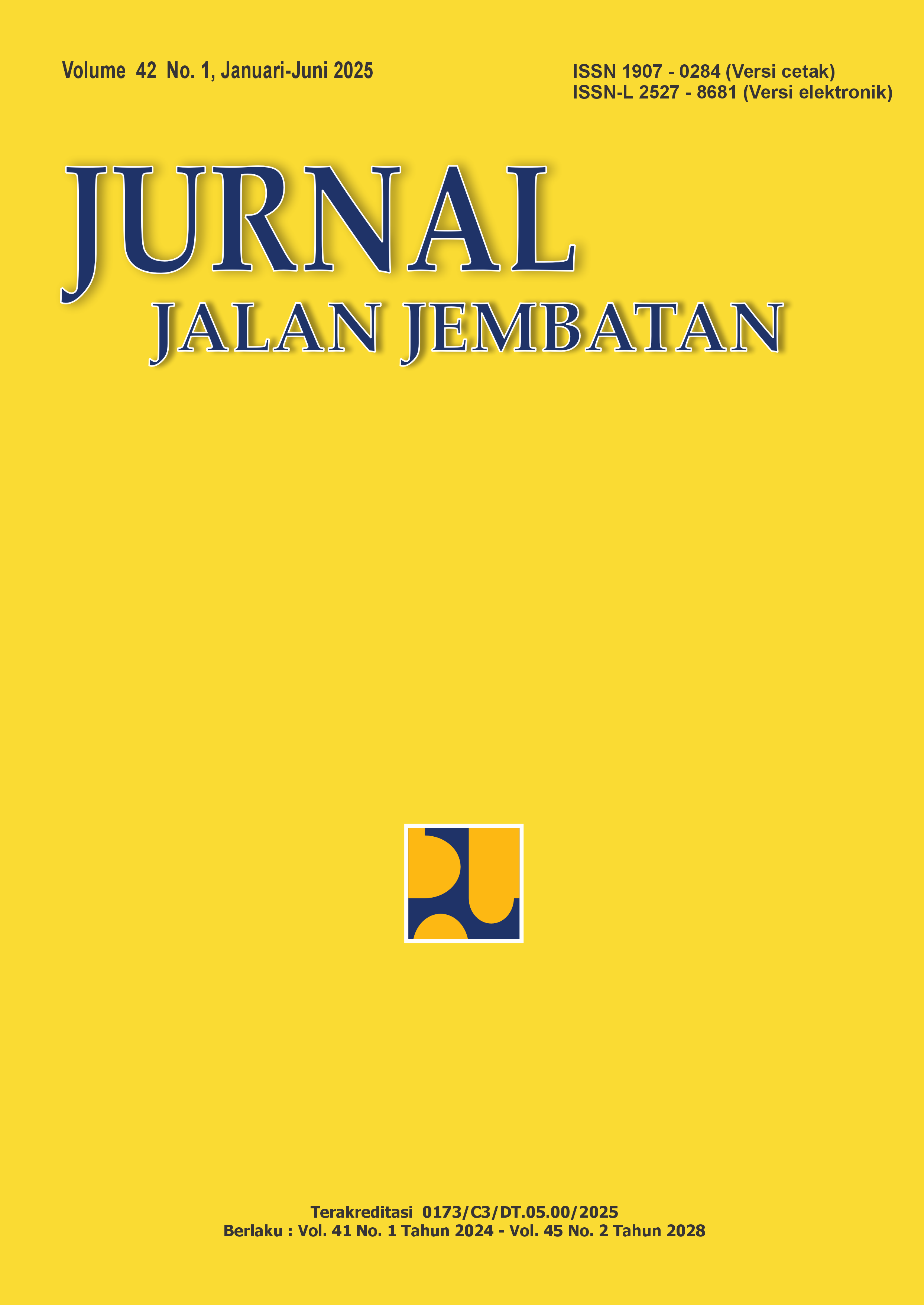COMPARATIVE STUDY OF INTEGRATED MULTICRITERIA DECISION MAKING: AHP-TOPSIS VS ENTROPY-TOPSIS FOR PRIORITIZING ROAD DAMAGE REPAIR
Main Article Content
Abstract
This study compares two integrated methods, specifically the Technique for Order Preference by Similarity to Ideal Solution (TOPSIS), to determine prioritized road sections for repair. The first method, AHP-TOPSIS, assigns weights to damage criteria based on the characteristics of road damage types. The second method, Entropy-TOPSIS, determines the weights of damage criteria using the Entropy formula. The accuracy of both methods is assessed by comparing their ranking results to the Pavement Condition Index (PCI) assessment based on the percentage of similarity. Based on the accuracy percentages, Entropy-TOPSIS demonstrates higher accuracy (27.5%) compared to AHP-TOPSIS (21.25%). Meanwhile, the road sections prioritized for repair yielded the same ranking results between AHP-TOPSIS and Entropy-TOPSIS, specifically the road sections on Jorong Beach, from STA 3+401 to 3+500 (Alternative 70). The results of this study support the development of more accurate and efficient decision-making models for infrastructure maintenance, which can be applied to broader transportation management systems.
Keywords: road damage, PCI, AHP, entropy, TOPSIS
Article Details

This work is licensed under a Creative Commons Attribution-NonCommercial-ShareAlike 4.0 International License.
Authors who publish in this journal agree to the following terms:
-
Authors retain copyright and grant the journal the right of first publication with the work simultaneously licensed under a Creative Commons Attribution License, which allows others to share the work with acknowledgment of the work's authorship and initial publication in this journal.
-
Authors may enter into additional contractual arrangements for the non-exclusive distribution of the journal's published version of the work (e.g., post it to an institutional repository or publish it in a book), with acknowledgment of its initial publication in this journal.
-
Authors are permitted and encouraged to post their work online (e.g., in institutional repositories or on their website) as it can lead to productive exchanges, as well as earlier and greater citation of the published work.
Each submitted manuscript must be accompanied by a "Manuscript Originality Statement" and a "Copyright Transfer Statement".

